
Flowers delivery in Boca Raton Florida
Flower bouquets are a delightful addition to any space, adding color and fragrance. However, their longevity is significantly influenced by various environmental and care factors, particularly in Florida’s unique climate. Understanding these factors is crucial for maintaining the freshness of your blooms.
Temperature plays a vital role in the lifespan of flowers. In Florida, where temperatures can rise, it is essential to place bouquets in cooler areas away from direct heat sources, such as heating vents. Additionally, while most flowers thrive at room temperature, some varieties may have specific preferences. Tropical flowers, for instance, may favor warmer environments, while delicate blooms like lilies and tulips prefer cooler conditions to prolong their life.
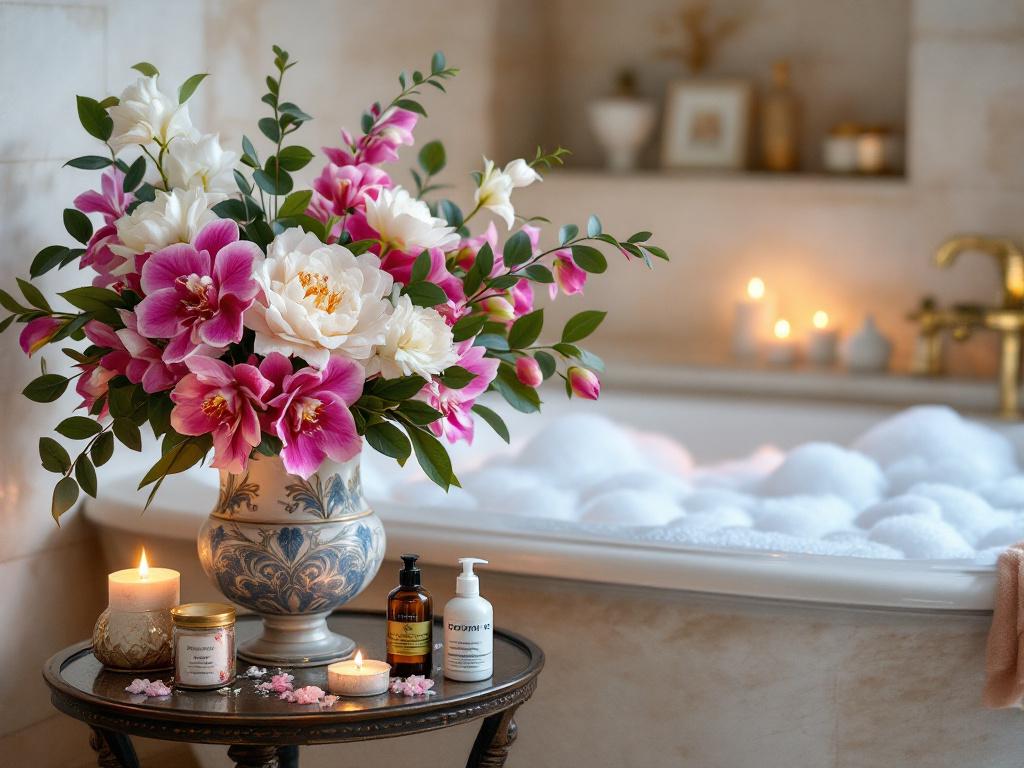
Humidity is another critical element affecting flower longevity. Florida’s humidity levels can fluctuate, which may either benefit or hinder the preservation of bouquets. High humidity can help maintain moisture levels, but excessive humidity could lead to the development of mold. Conversely, too little humidity could cause stems to dry out quickly. Therefore, it is advisable to monitor the humidity levels in the designated room or area where the bouquet is placed.
Sunlight exposure is equally vital. While some flowers may enjoy bright light, too much direct sunlight can lead to wilting and faster deterioration. Finding a balance is key; placing the bouquet near a window where it receives indirect sunlight is ideal for most varieties. Additionally, it is essential to provide proper care prior to placement, which includes cutting the stems at an angle to enhance water absorption and ensuring the use of clean water in the vase to prevent bacterial growth.
In summary, understanding these fundamental factors—temperature, humidity, and sunlight exposure—along with proper pre-placement care, will significantly help in maximizing the longevity of your flower bouquets in Florida’s climate.
Ideal Placement for Living Rooms and Common Areas
When it comes to maximizing the longevity of flower bouquets in living rooms and common areas, strategic placement is essential. First and foremost, it is important to select locations that receive balanced light without exposing the flowers to direct sunlight. Direct sunlight can quickly lead to wilting and fading of colors, which diminishes the overall aesthetic appeal of your floral arrangements. Therefore, consider placing your bouquets near windows that are covered with sheer curtains or in areas that benefit from indirect light.
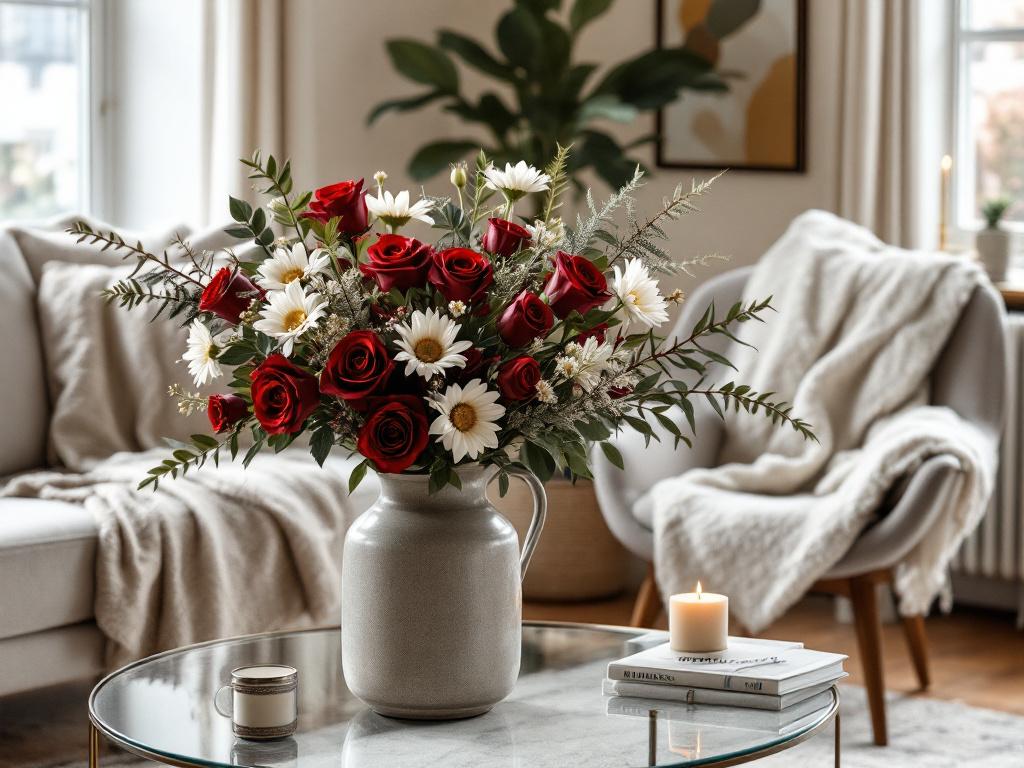
Additionally, air circulation plays a vital role in maintaining the freshness of flowers. Bouquets should be placed in areas where air can flow freely. A cluttered space can hinder this circulation, leading to stagnant air and a quicker decline in the longevity of your flowers. Ideal locations include airy corners of the room, or elevated shelves that allow flowers to benefit from ambient air movement. It’s advisable to avoid placing them near air conditioning vents or heaters, as extreme temperature fluctuations can also adversely affect their lifespan.
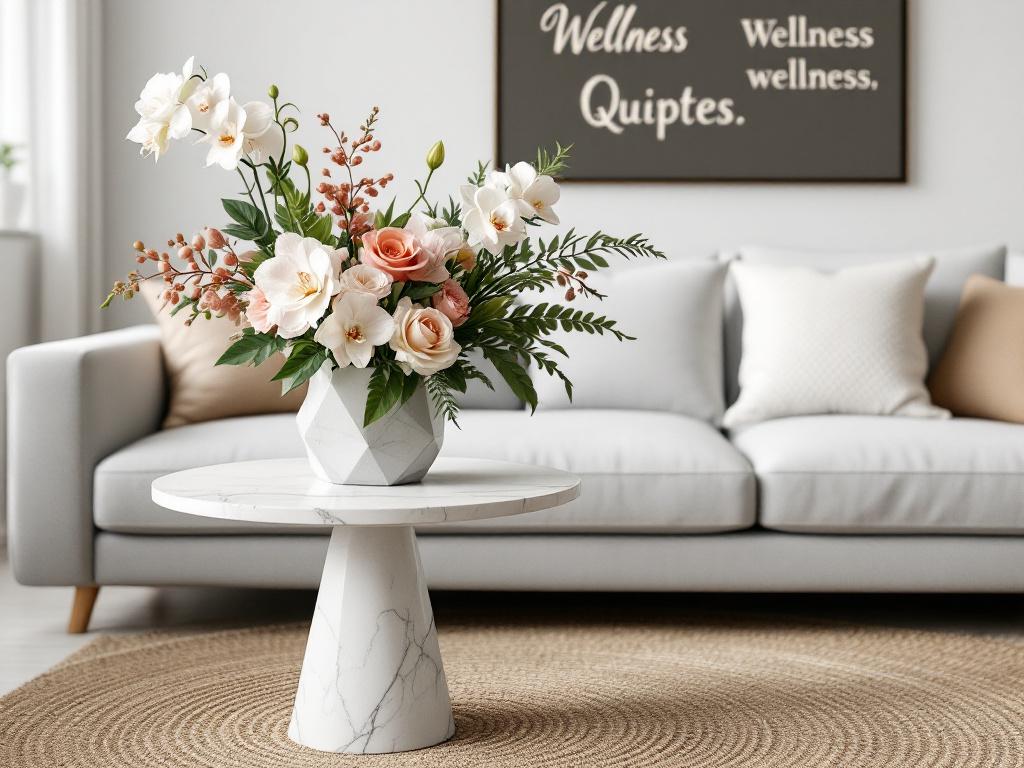
Moreover, the physical environment of your living spaces can be enhanced by thoughtfully complementing your flower arrangements with the room’s decor. Selecting vases that match or accentuate the color palette of the room not only emphasizes the beauty of the flowers but also creates a cohesive look throughout the space. For example, a vibrant flower bouquet can be showcased in a neutral-toned vase to create a striking focal point. When decorating with flowers, consider integrating them into existing decor themes, whether rustic, modern, or traditional, thus ensuring your bouquets are not just an accessory but also an integral aspect of the room’s design.
Best Practices for Flower Arrangements in Bedrooms and Private Spaces
Arranging flower bouquets in bedrooms and other intimate spaces requires careful consideration to maximize their longevity and aesthetic appeal. The environment plays a crucial role in ensuring that flowers remain vibrant and fresh for an extended period. When positioning flower arrangements in such areas, it is essential to prioritize lighting conditions. Natural light can enhance the beauty of flowers; however, direct sunlight can lead to wilting and shorter lifespans. Opt for locations that receive filtered light or are slightly shaded, as this compromises neither the vibrancy of the colors nor the health of the blooms.
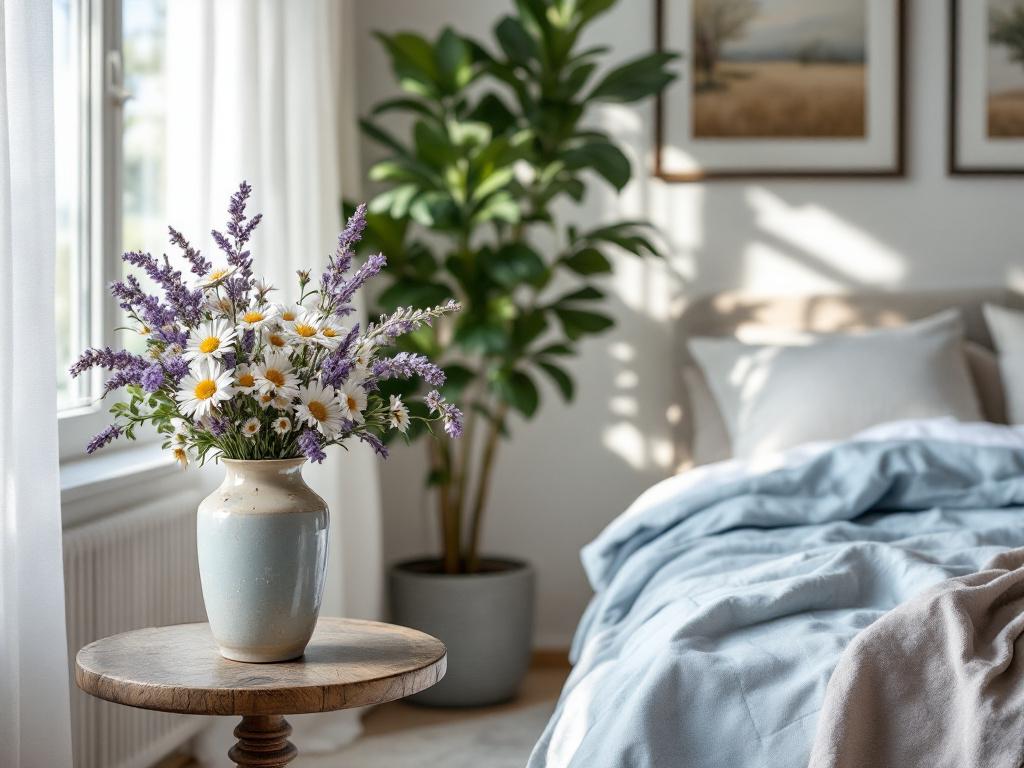
Allergen management is particularly important in bedrooms. Certain flower species may trigger allergies, causing discomfort. To minimize allergic reactions, it is advisable to choose hypoallergenic flowers such as orchids, tulips, and daisies. Their beauty does not come at the expense of boosting allergens in already congested environments. Furthermore, scent plays a significant role in personal spaces, particularly in enhancing relaxation and overall wellbeing. Selecting floral scents that are soothing, such as lavender or jasmine, can create a tranquil atmosphere conducive to rest.

Vase selection also greatly impacts the preservation of flowers. It is crucial to choose a clean vase that is appropriately sized for the bouquet to prevent overcrowding, which can hinder water absorption and air circulation. A narrow neck can hold stems snugly, while wider vessels allow for more water. Additionally, maintaining a cool, stable environment is beneficial. Avoid placing flower arrangements near heating vents or electronic devices that generate heat, as fluctuating temperatures can lead to premature wilting. By adhering to these best practices, individuals can enjoy their floral arrangements longer while enhancing the ambiance of their private spaces.
Handling Bouquets in Kitchens and Dining Areas
The kitchen and dining areas often present unique challenges for maintaining the freshness and longevity of flower bouquets. These spaces commonly expose arrangements to heat sources such as ovens, stoves, and dishwashers, as well as humidity from cooking activities. To optimize the lifespan of your floral arrangements in these environments, careful placement and consideration of potential hazards are essential.
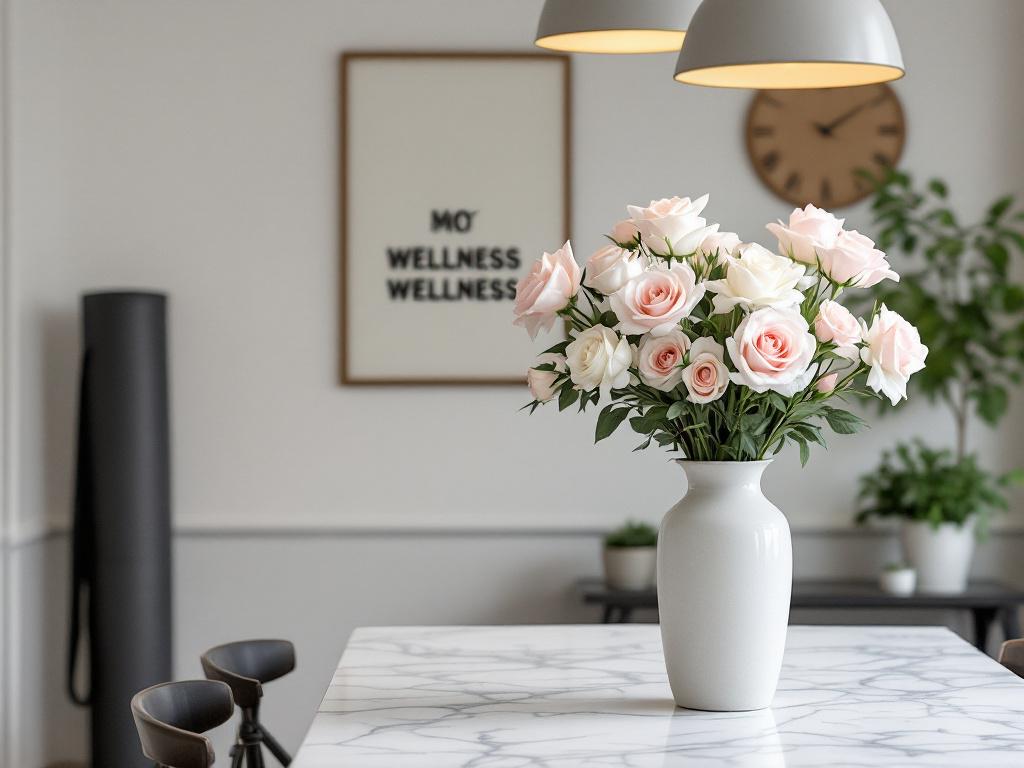
First, avoid placing bouquets directly near heat sources. Instead, opt for locations that offer indirect light and moderate temperatures. A table on the side of the kitchen or a well-ventilated countertop can provide a suitable temperature for the flowers. Utilizing tables that are further away from the cooking area effectively reduces the risk of heat damage. Additionally, consider incorporating decorative shelves that can display floral arrangements without placing them in harm’s way.
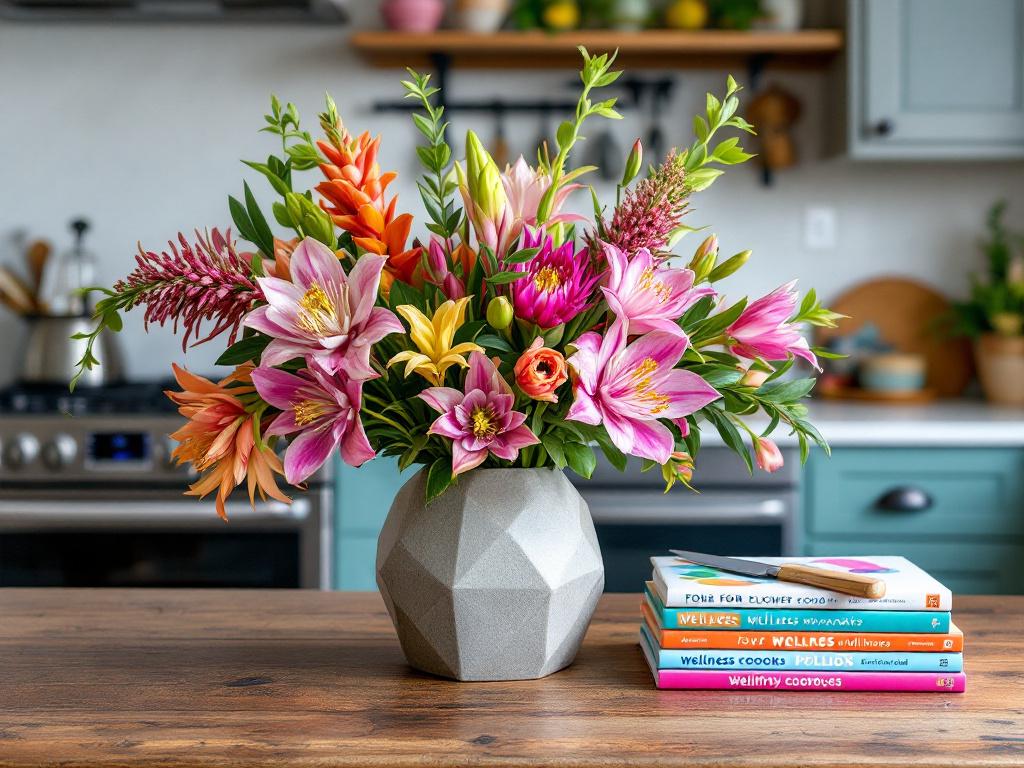
Humidity and water splashes from kitchen activities can also negatively impact flower arrangements. Employing a vase with a sturdy base can help minimize the risk of accidental spills. Moreover, placing a shallow dish beneath the vase can catch any water that may escape, protecting countertops and prolonging the health of the bloom. For dining areas, ensure that centerpieces are placed securely on tables where they are still visible but not in the direct line of cooking activities.
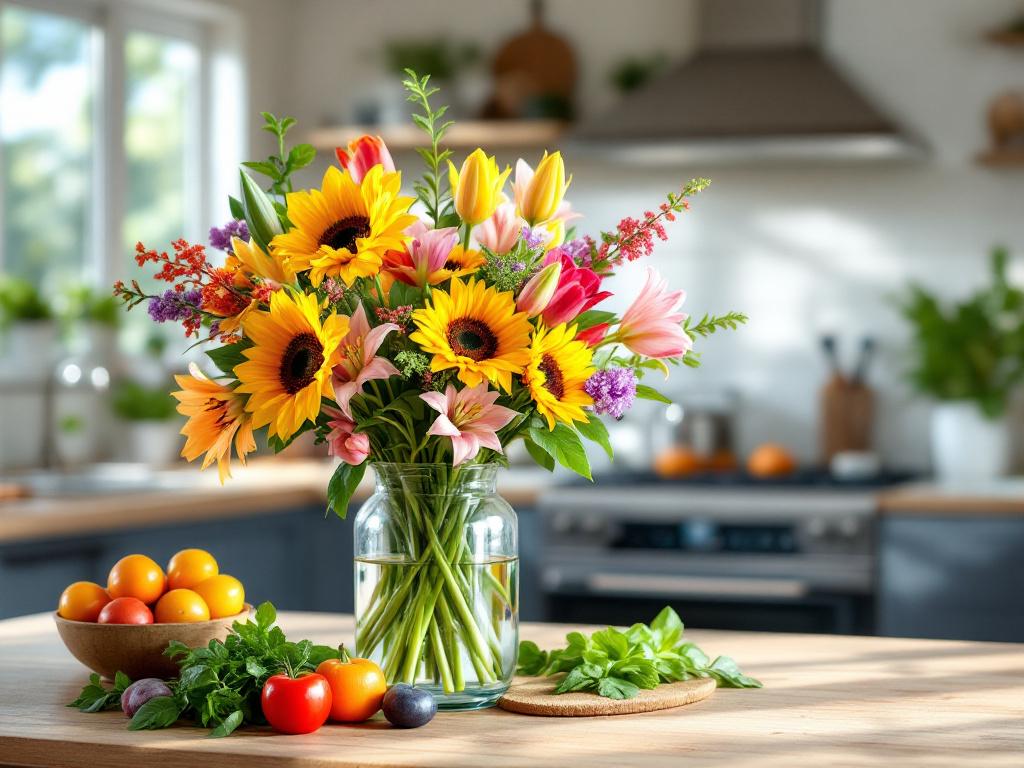
Seasonal arrangements can enhance the overall dining experience. For example, using flowers that flourish in cooler temperatures, such as chrysanthemums or hydrangeas, allows for beautiful displays even in a warm kitchen environment. Incorporating seasonal blooms can also lend a festive touch to gatherings, making dining experiences more memorable. Additionally, consider mixing in herbs or foliage that can withstand heat, providing both aesthetic appeal and practical benefits.
By strategically placing flower arrangements and selecting blooms that thrive in controlled conditions, you can significantly enhance the longevity of your bouquets in kitchens and dining areas while enjoying their beauty and fragrance.
